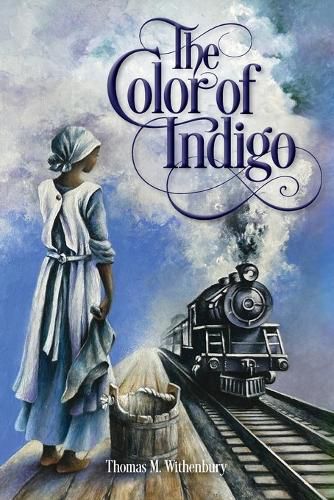Readings Newsletter
Become a Readings Member to make your shopping experience even easier.
Sign in or sign up for free!
You’re not far away from qualifying for FREE standard shipping within Australia
You’ve qualified for FREE standard shipping within Australia
The cart is loading…






The Color of Indigo: A Novel Paperback by Thomas M. Withenbury (Author)
Historical Fiction
The narrative of The Color of Indigo unfolds on a northern Mississippi cotton and indigo plantation shortly after the first volleys of the Civil War are ringing out against Ft. Sumter near South Carolina. The protagonists are Indigo, a slave laundress in her late teens, and her budding love interest, Major, a slave man in his 20s who works tirelessly as the plantation blacksmith.
Although patently disallowed by the plantation slavers, Indigo and Major still foster a love relationship sub rosa. The couple's secret tryst, nonetheless, engenders a pregnancy. Their horrific existence with the white slavers leads the expecting parents to realize they cannot, must not, have their child born into bondage. They learn about something called the Underground Railroad.
The couple and other trusted sympathizers decide that Indigo shall receive a ticket, so to speak, on this metaphorical railroad to freedom. She is secreted on a steam-driven logging train to the Mississippi River, where she stows away on a steamboat bound for Cincinnati, Ohio. She and her newborn son then pursue the next leg of their sojourn on another steam-driven train to freedom in the Village of Century just north of Cincinnati.
Indigo's story skips ahead more than a century to 1972 in the same village. It is a factious time in American history with opposing generations at grievous odds over the country's involvement in a conflict in Vietnam. The reader is introduced to new protagonists--Ward, a returning Vietnam vet, and Caro, an accomplished journalist. Ward's father, who is terminally ill, informs his son he will inherit the family's weekly newspaper enterprise. Following his father's death, Ward and Caro work together on their newspaper, the Century Chronicle, to unravel a story of a young girl from long ago.
The story is a moving saga of familial love. Of ancestry. Of shared grief for a country embroiled in a struggle at home over a conflict in Southeast Asia. The novel explores the contentious milieus of the Civil War and the Vietnam Era nearly a century later. It is about the dehumanizing effects of racism and segregation. In the end, The Color of Indigo offers a promise of dignity and hope.
$9.00 standard shipping within Australia
FREE standard shipping within Australia for orders over $100.00
Express & International shipping calculated at checkout
The Color of Indigo: A Novel Paperback by Thomas M. Withenbury (Author)
Historical Fiction
The narrative of The Color of Indigo unfolds on a northern Mississippi cotton and indigo plantation shortly after the first volleys of the Civil War are ringing out against Ft. Sumter near South Carolina. The protagonists are Indigo, a slave laundress in her late teens, and her budding love interest, Major, a slave man in his 20s who works tirelessly as the plantation blacksmith.
Although patently disallowed by the plantation slavers, Indigo and Major still foster a love relationship sub rosa. The couple's secret tryst, nonetheless, engenders a pregnancy. Their horrific existence with the white slavers leads the expecting parents to realize they cannot, must not, have their child born into bondage. They learn about something called the Underground Railroad.
The couple and other trusted sympathizers decide that Indigo shall receive a ticket, so to speak, on this metaphorical railroad to freedom. She is secreted on a steam-driven logging train to the Mississippi River, where she stows away on a steamboat bound for Cincinnati, Ohio. She and her newborn son then pursue the next leg of their sojourn on another steam-driven train to freedom in the Village of Century just north of Cincinnati.
Indigo's story skips ahead more than a century to 1972 in the same village. It is a factious time in American history with opposing generations at grievous odds over the country's involvement in a conflict in Vietnam. The reader is introduced to new protagonists--Ward, a returning Vietnam vet, and Caro, an accomplished journalist. Ward's father, who is terminally ill, informs his son he will inherit the family's weekly newspaper enterprise. Following his father's death, Ward and Caro work together on their newspaper, the Century Chronicle, to unravel a story of a young girl from long ago.
The story is a moving saga of familial love. Of ancestry. Of shared grief for a country embroiled in a struggle at home over a conflict in Southeast Asia. The novel explores the contentious milieus of the Civil War and the Vietnam Era nearly a century later. It is about the dehumanizing effects of racism and segregation. In the end, The Color of Indigo offers a promise of dignity and hope.